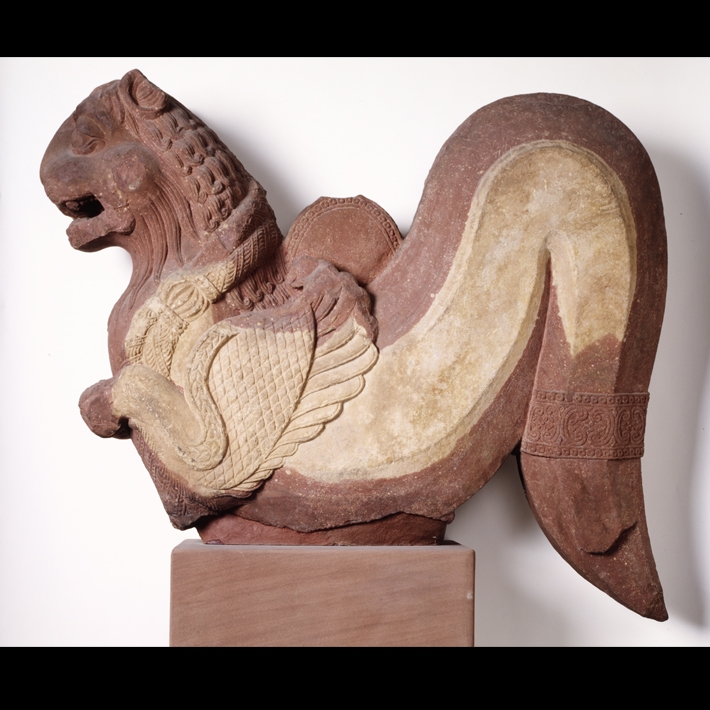44.Pillar capital in the form of a winged lion

- 4th–3rd century BCE
- Masarh, Shahabad district, Bihar
- Bihar Museum, Patna
This fragment of a lion, part of a double-ended capital, was recovered at the ancient Mauryan capital of Masarh, in western Bihar. Its power and ferocity echo heraldic beasts of the earlier Achaemenid Empire (550-330 BCE; present-day Iran) to the west. That the Mauryan king Chandragupta had a densely pillared audience hall similar to those of the Persians, and that both dynasties favored highly polished and reflective stone finishes, points to their close cultural interaction. The lion had long served as an emblem of royal strength and nobility. In the mid-third century BCE, the roaring lion became a metaphor for the Buddha, the lion of the Shakya clan

 Previous
Previous